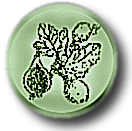Subsystem: Pyruvate Alanine Serine Interconversions
This subsystem's description is:
=========Variant codes======================
1.0 - Organisms that need external alanine and serine (only have racemaces)
2.0 - Organisms that can make serine from pyruvate but require external alanine
3.0 - Organisms that can make both serine and alanine from pyruvate and can also import both
4.0 - Organisms that can make both serine and alanine (from D-alanine) and appear not to transport them
5.0 - Organisms that make both alanine and serine from pyruvate and use alanine dehydrogenase
6.0 - Organisms that can make alanine from pyruvate but have no alanine-serine connection
(-1) Organisms that do not have any pyruvate-serine-alanine interconversion pathways
For more information, please check out the description and the additional notes tabs, below
| Diagram | Functional Roles | Subsystem Spreadsheet | Description | Additional Notes | Scenarios | |||||||||||||||||||||||||||||||||||
Oops! We thought there was a diagram here, but we can't find it. Sorry
=========Variant codes====================== 1.0 - Organisms that need external alanine and serine (only have racemaces) 2.0 - Organisms that can make serine from pyruvate but require external alanine 3.0 - Organisms that can make both serine and alanine from pyruvate and can also import both 4.0 - Organisms that can make both serine and alanine (from D-alanine) and appear not to transport them 5.0 - Organisms that make both alanine and serine from pyruvate and use alanine dehydrogenase 6.0 - Organisms that can make alanine from pyruvate but have no alanine-serine connection (-1) Organisms that do not have any pyruvate-serine-alanine interconversion pathways This subsystem was encoded by master:JasonS_UCSD. Ownership of the SS was changed 08/30/06 to OlgaZ for extending and further maintenance. =========Overview:======================= In several organisms, Alanine dehydrogenase bears significant similarity to NAD(P) transhydrogenase alpha subunit (EC 1.6.1.2)--on the order of 10^-25 which preforms a similar function but no annotation changes were made considering the significant support by other sources of the NAD(P) transhydrogenase alpha subunit (EC 1.6.1.2) annotation. Functional role of EC 4.3.1.17 SerD was screened for similarity and found to be annotated equally as serine deaminase as well as serine dehydratase for which every match had >99% similarity and all EC numbers were the same. Since this annotation only occured in this subsystem, the functional roles were changed to be consistant as L-Serine dehydratase (EC 4.3.1.17) which is preferentially used over serine deaminase (EC 4.3.1.17) in other databases such as NCBI and Uniprot. D-Alanine aminotransferase annotations changed across a broad variety of organisms from D-Alanine aminotransferase to D-Alanine aminotransferase (EC 2.6.1.21)--only EC # was missing. D-Alanine aminotransferase (EC 2.6.1.21) also occurs in Peptidoglycan biosynthesis with a matching annotation D-Serine deaminase (EC 4.3.1.18) was annotated across a variety of genomes that had it previously annotated as small protein involved in amino acid metabolism and had probability similarity with E.coli dsdA gene of Upon location of gene YDR111C in Saccharomyces cerevisiae and its definition as an alanine aminotransferase in KEGG it's annotation was made--it had not previously been personally annotated--to a putative alanine transaminase (glutamyc pyruvic transaminase) (EC 2.6.1.2) which describes its role in teh reaction L-alanine + 2-oxoglutarate = pyruvate + L-glutamate a bit better than alanine aminotransferase. This gene had not previously existed in other subsystems so it's annotation was carried across organisms with sequence e values of Any gene for 2.6.1.12 could not be found in any organism either through KEGG or in other subsystems of SEED. Similarly, no genes could be found for the enzyme 5.1.1.10 in any organisms in either KEGG, ecocyc, SEED or the ERGO database The gene AlaGAT (2.6.1.44) when it was first found in Prochlorococcus marinus subsp. marinus str. (evidence of presence of the gene gathered from KEGG) was frequently annotated as the enzyme that catalyzes the reactions serine+pyruvate-> L-alanine + hydroxypyruvate as well as L-alanine + glyoxylate -> pyruvate + glycine. I found no corroborating evidence for the former reaction so in this subsystem only the latter is represented however, the functional annotations for the genes that mentioned both functions have been created as multi-functional genes with both. Also Ala3OAT Omega-amino acid--pyruvate aminotransferase (EC 2.6.1.18)is highly similar to Adenosylmethionine-8-amino-7-oxononanoate aminotransferase (EC 2.6.1.62) in multiple organisms and may need a change of annotation L-serine dehydratase is an alias of L-serine deaminase with the same EC number 4.3.1.17 The reaction L-Alanine:2-oxo-acid aminotransferase (EC 2.6.1.12) catalyzes the reaction L-alanine + a 2-oxo acid = pyruvate + an L-amino acid and should be included in this subsystem but no genes in any organism could be located for a sequence homology search The reaction L-amino acid racemase (EC 5.1.1.10) catalyzes the general reaction L-Serine to D-Serine and in general alternates an L-amino acid with a D-amino acid. No genes in any organisms could be found for this particular reaction but it should be included if found. AlaTA appears to be only in eukaryotic pathways Currently selected organism: Anabaena variabilis ATCC 29413 (open scenarios overview page for organism)

| ||||||||||||||||||||||||||||||||||||||||




